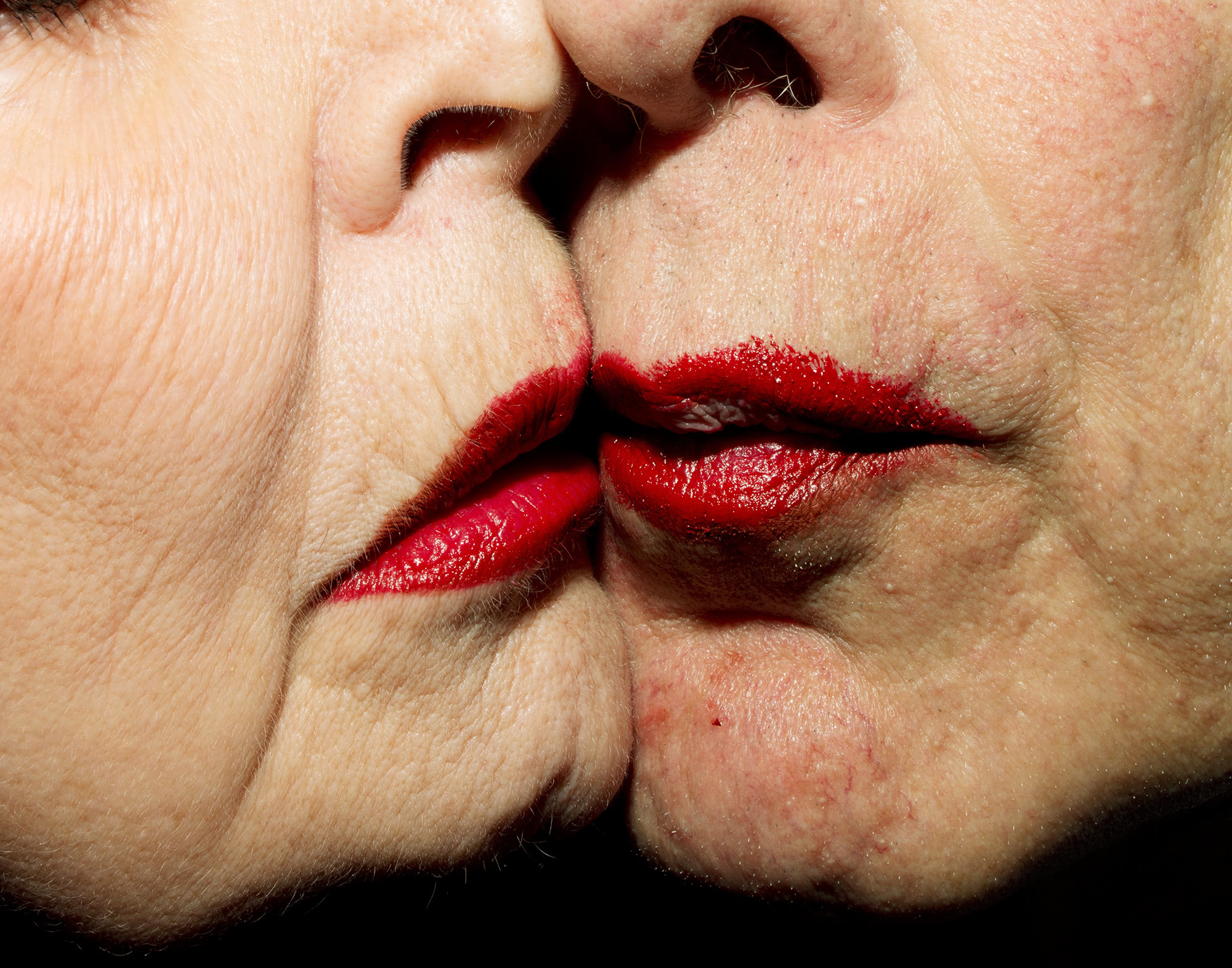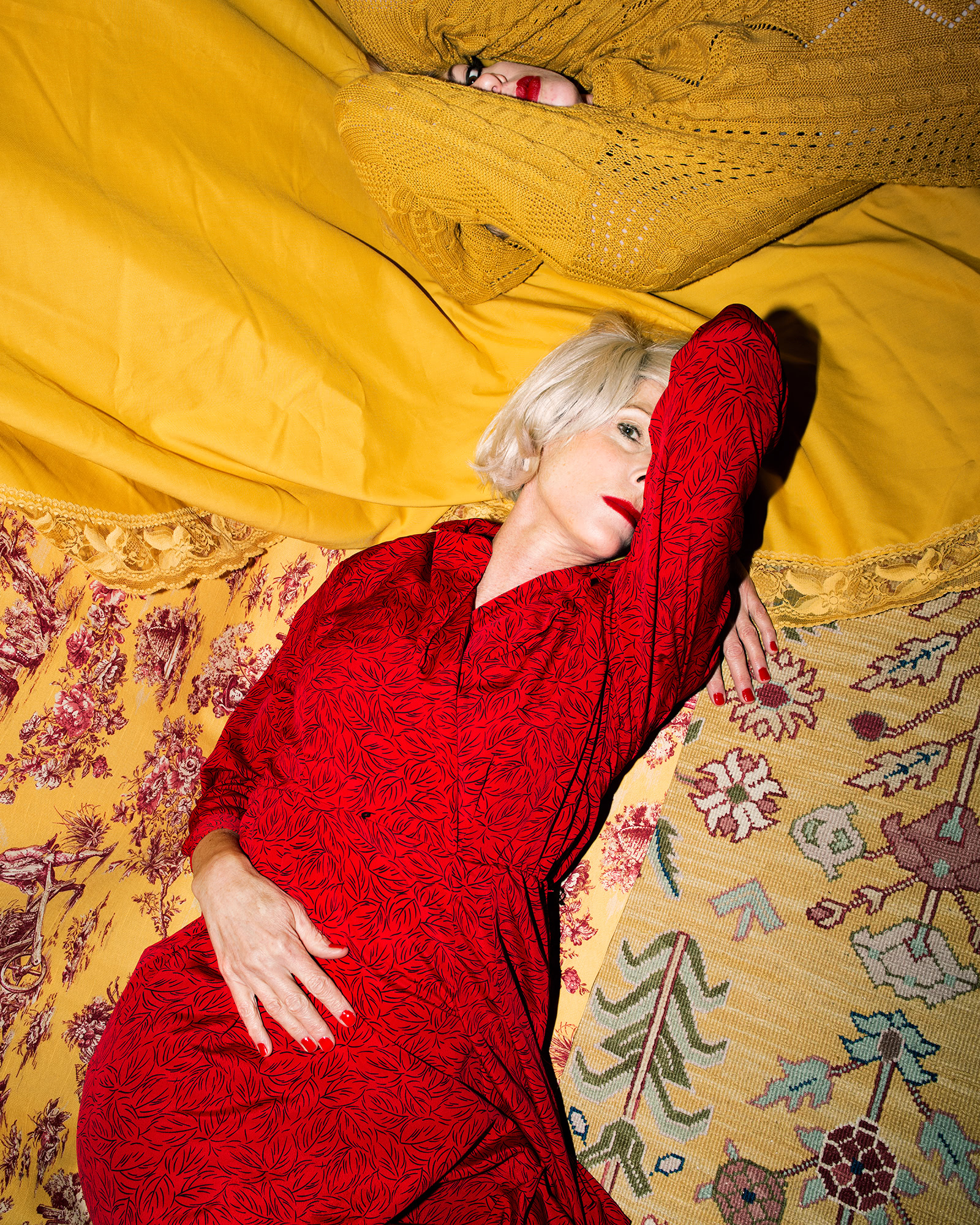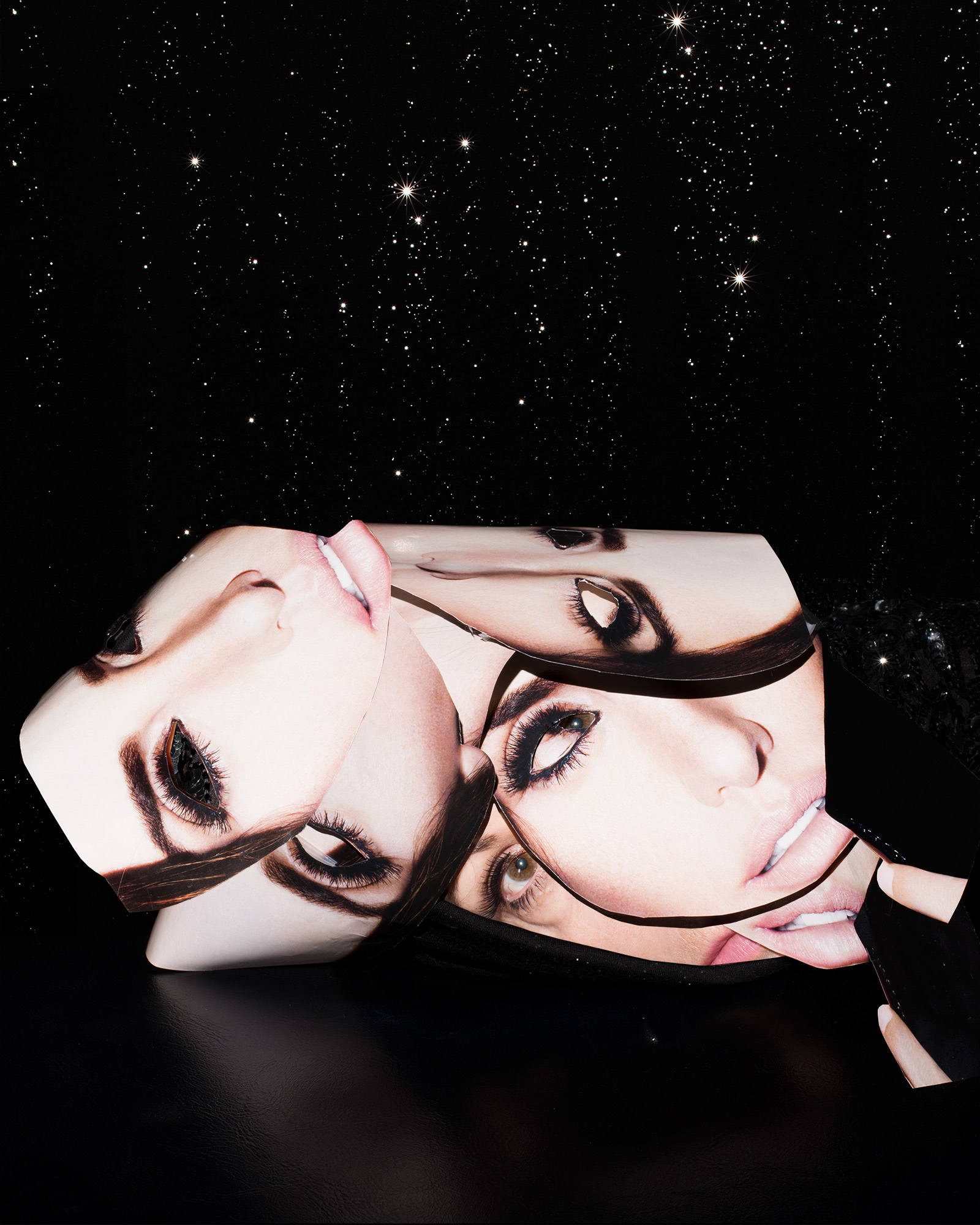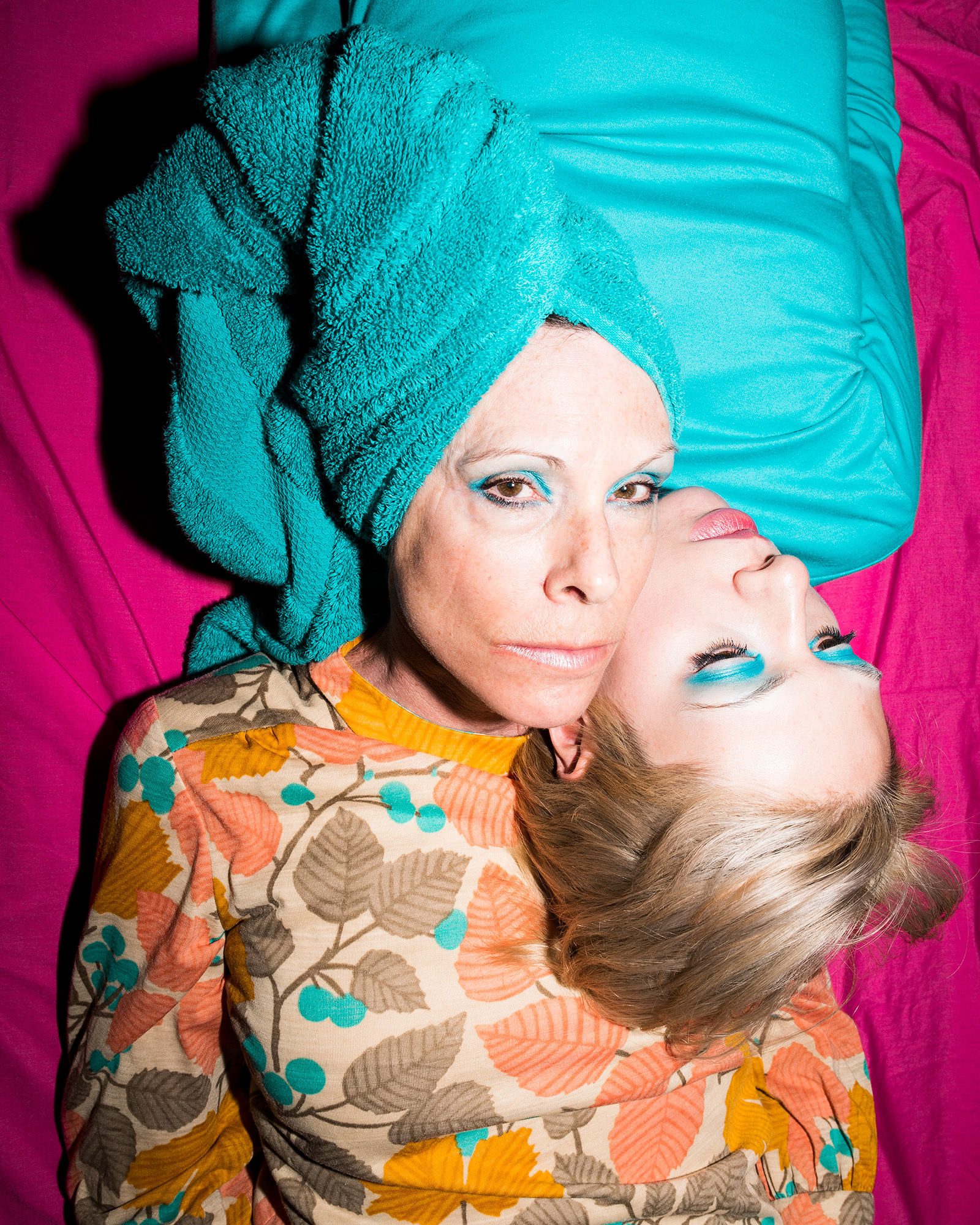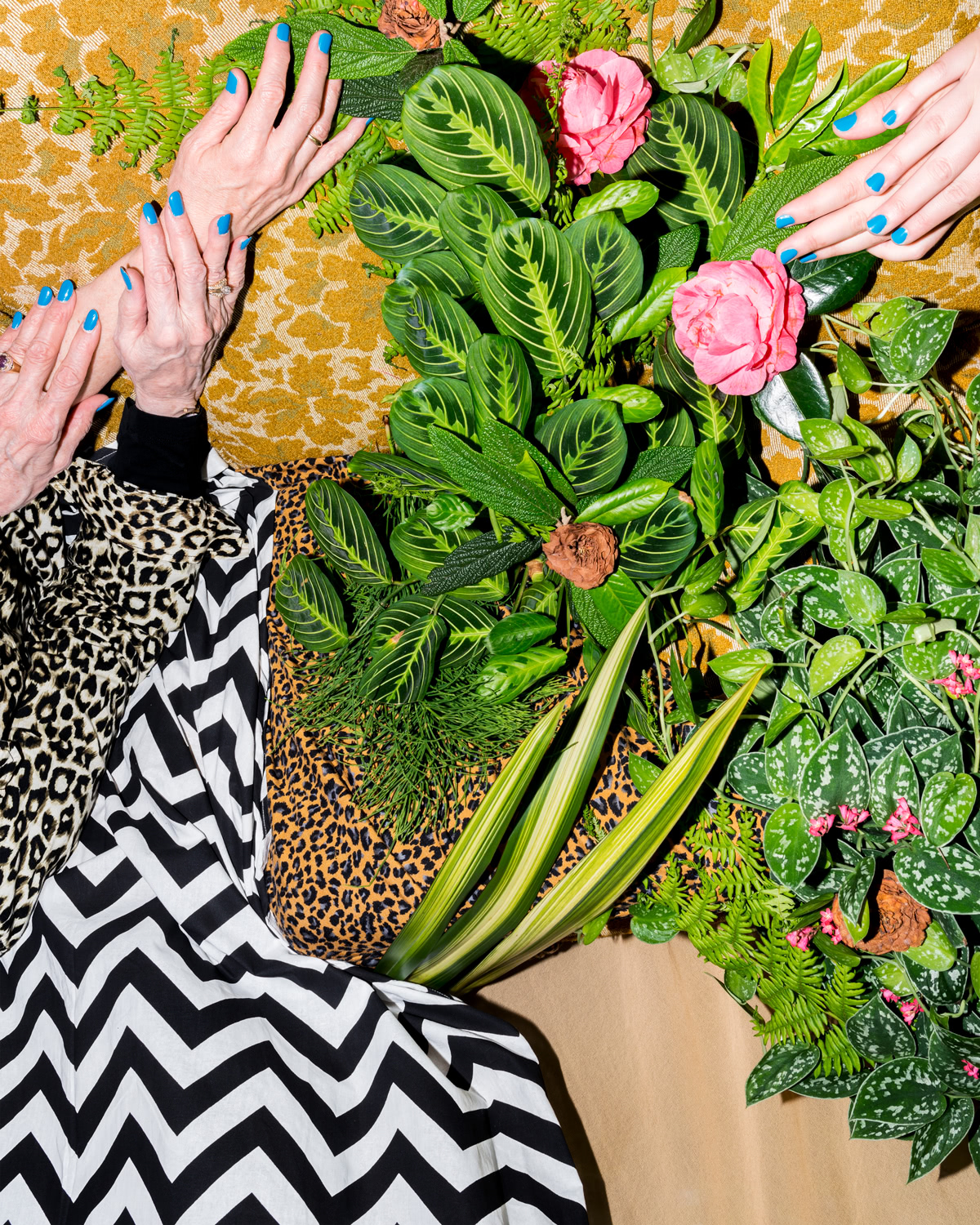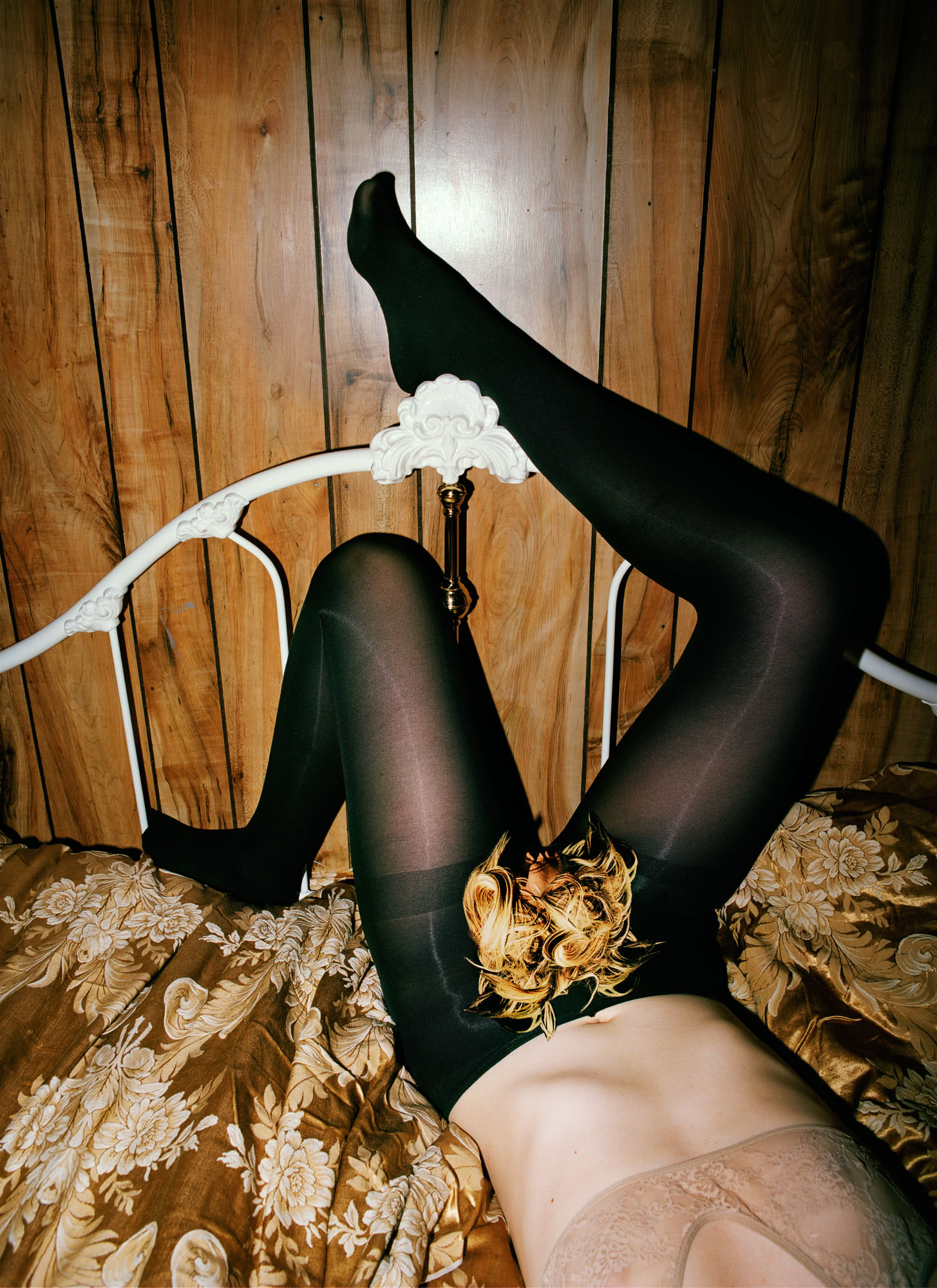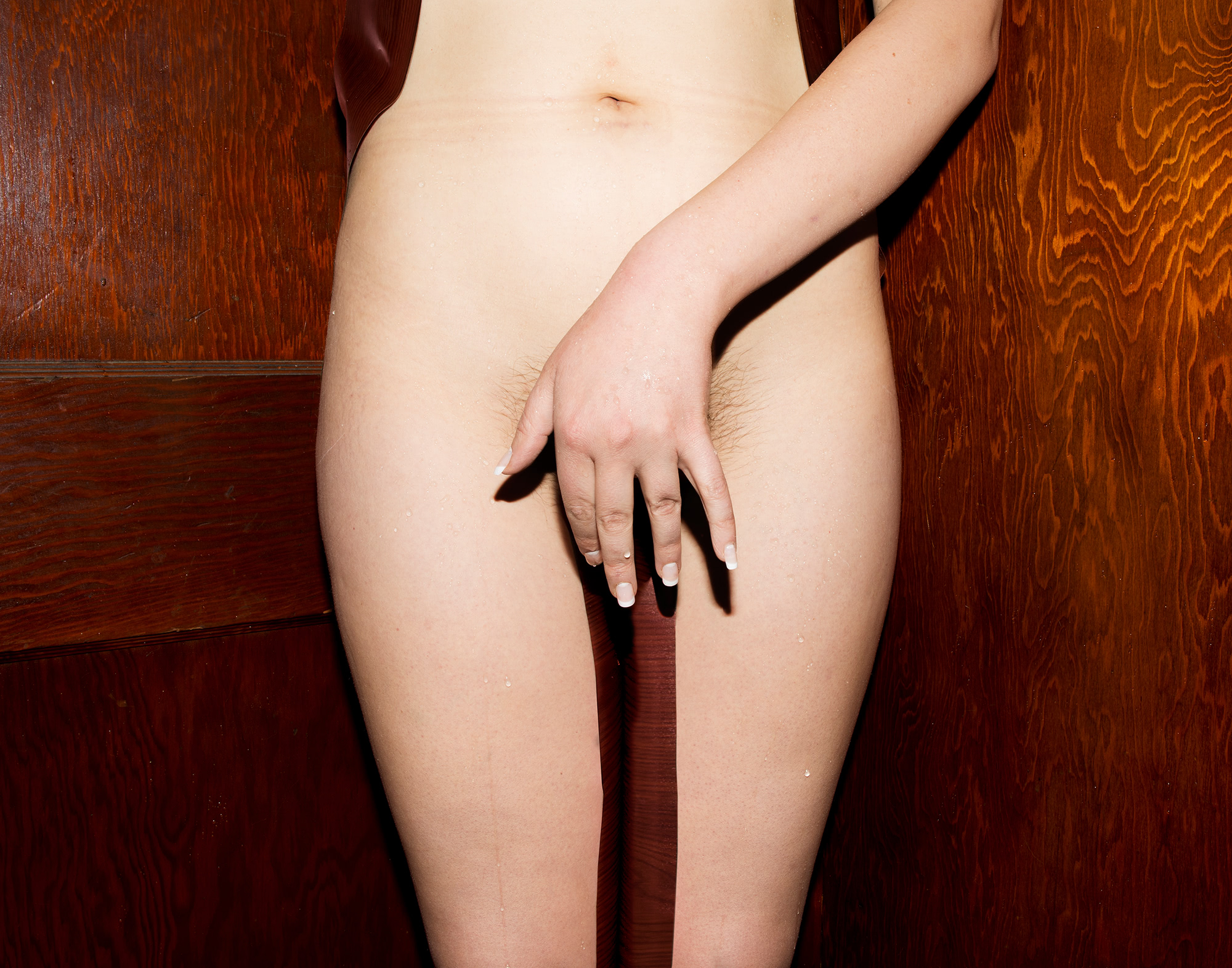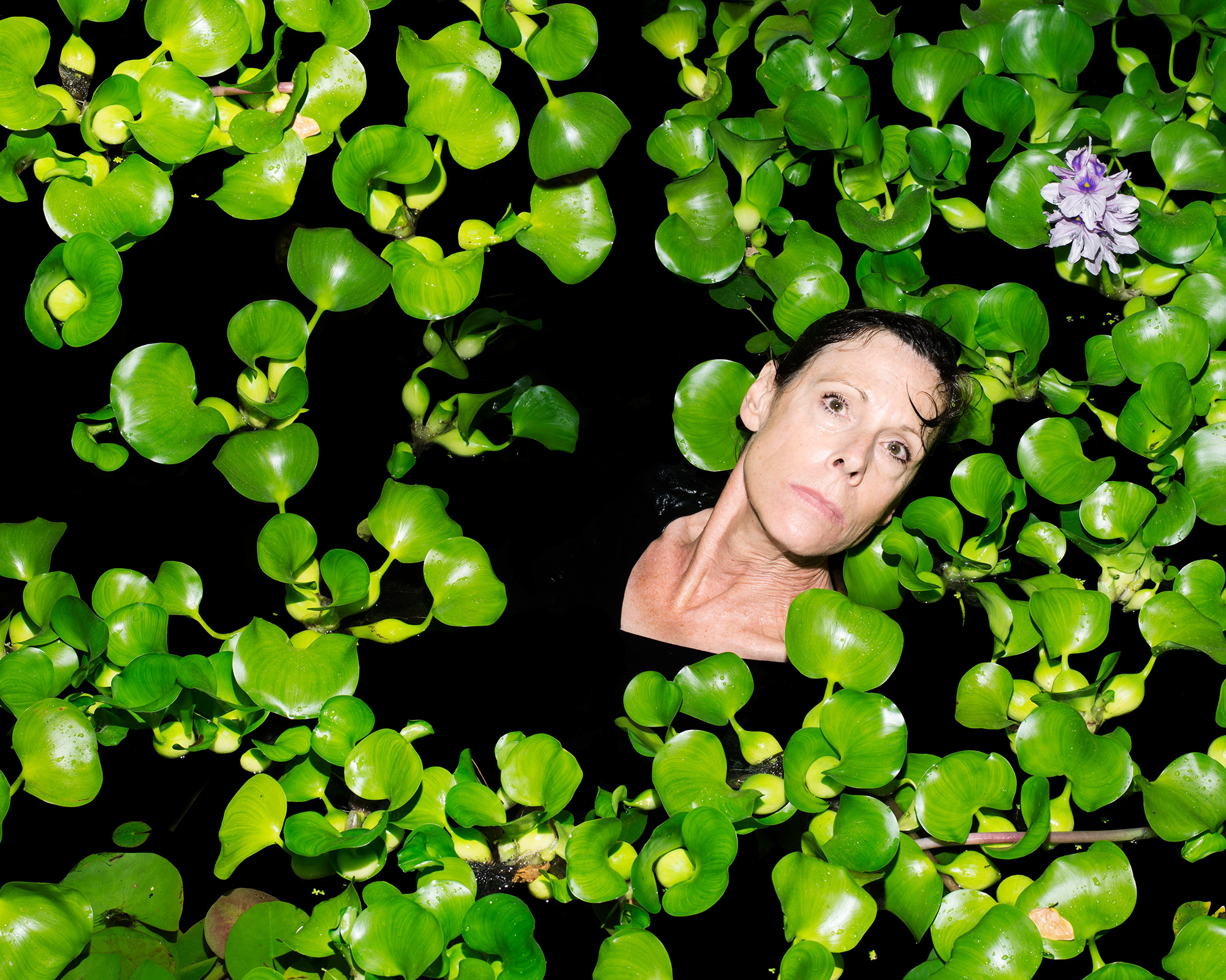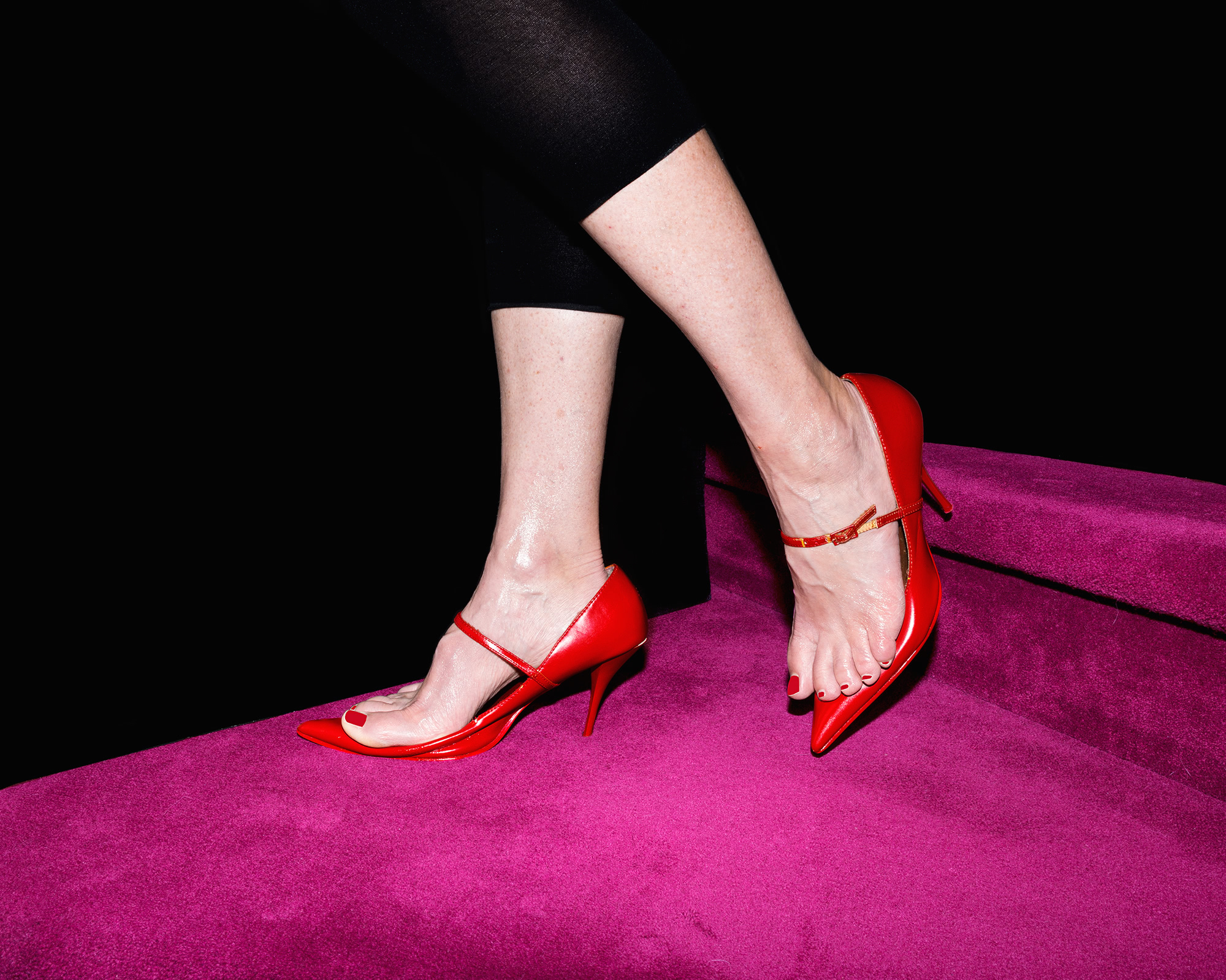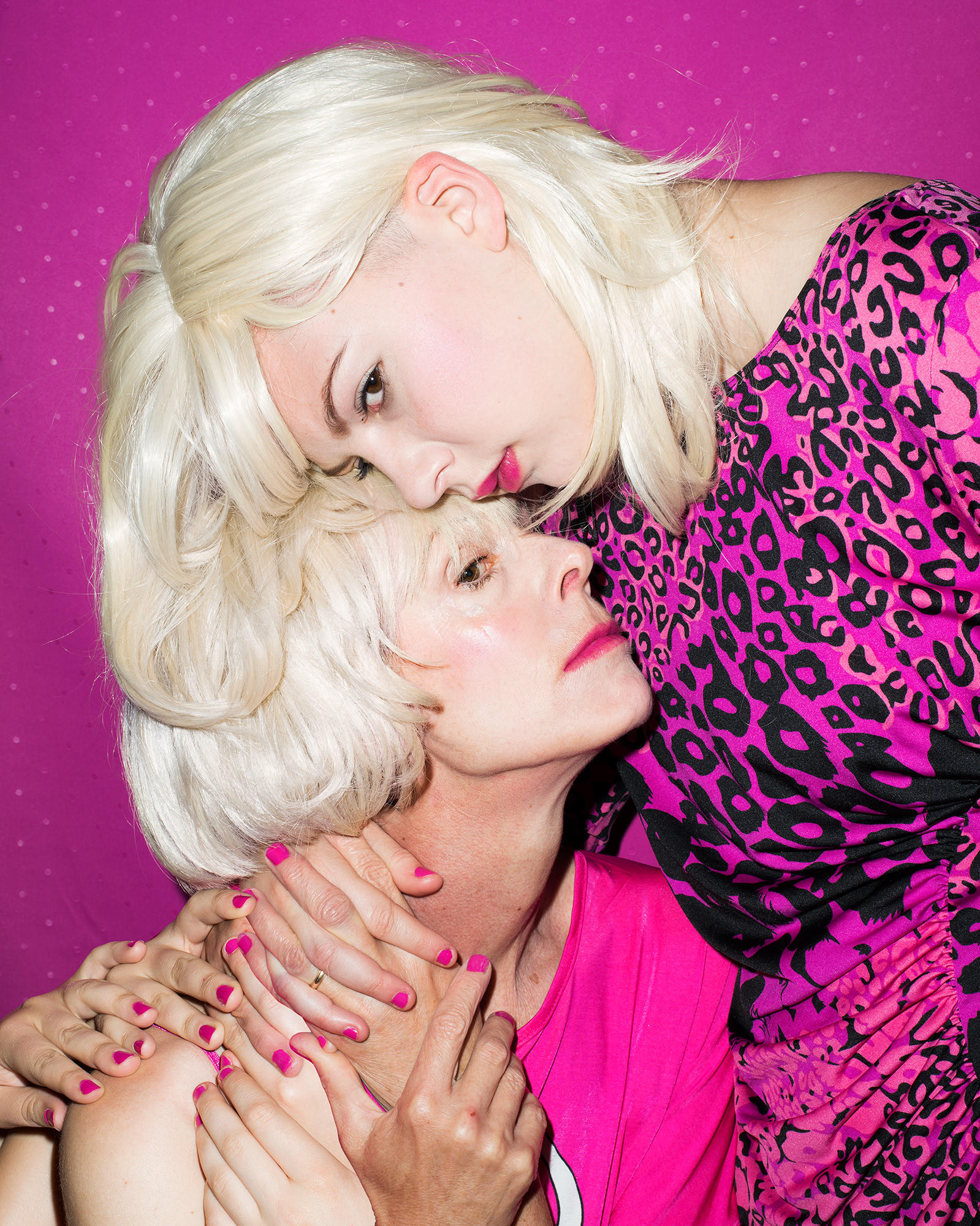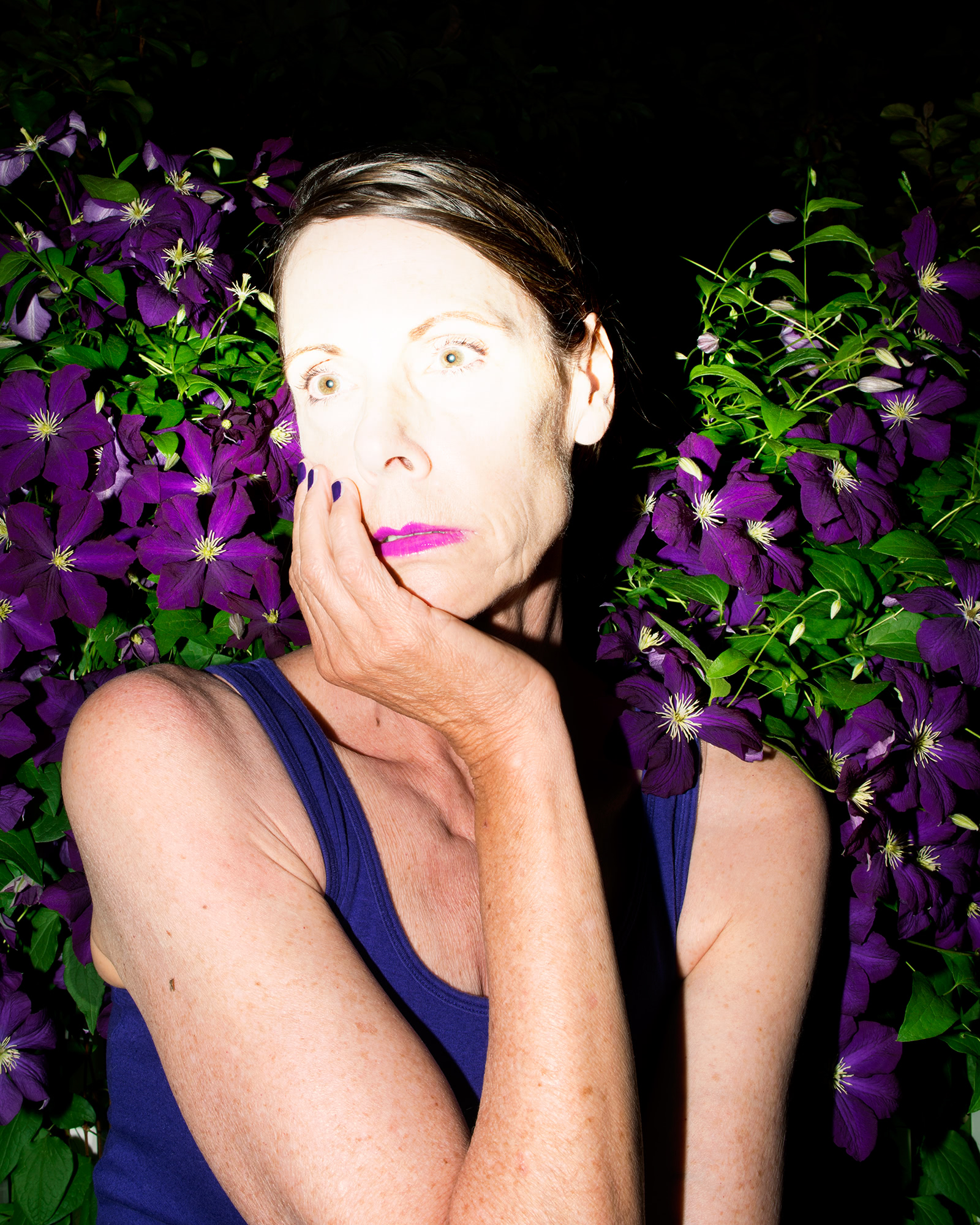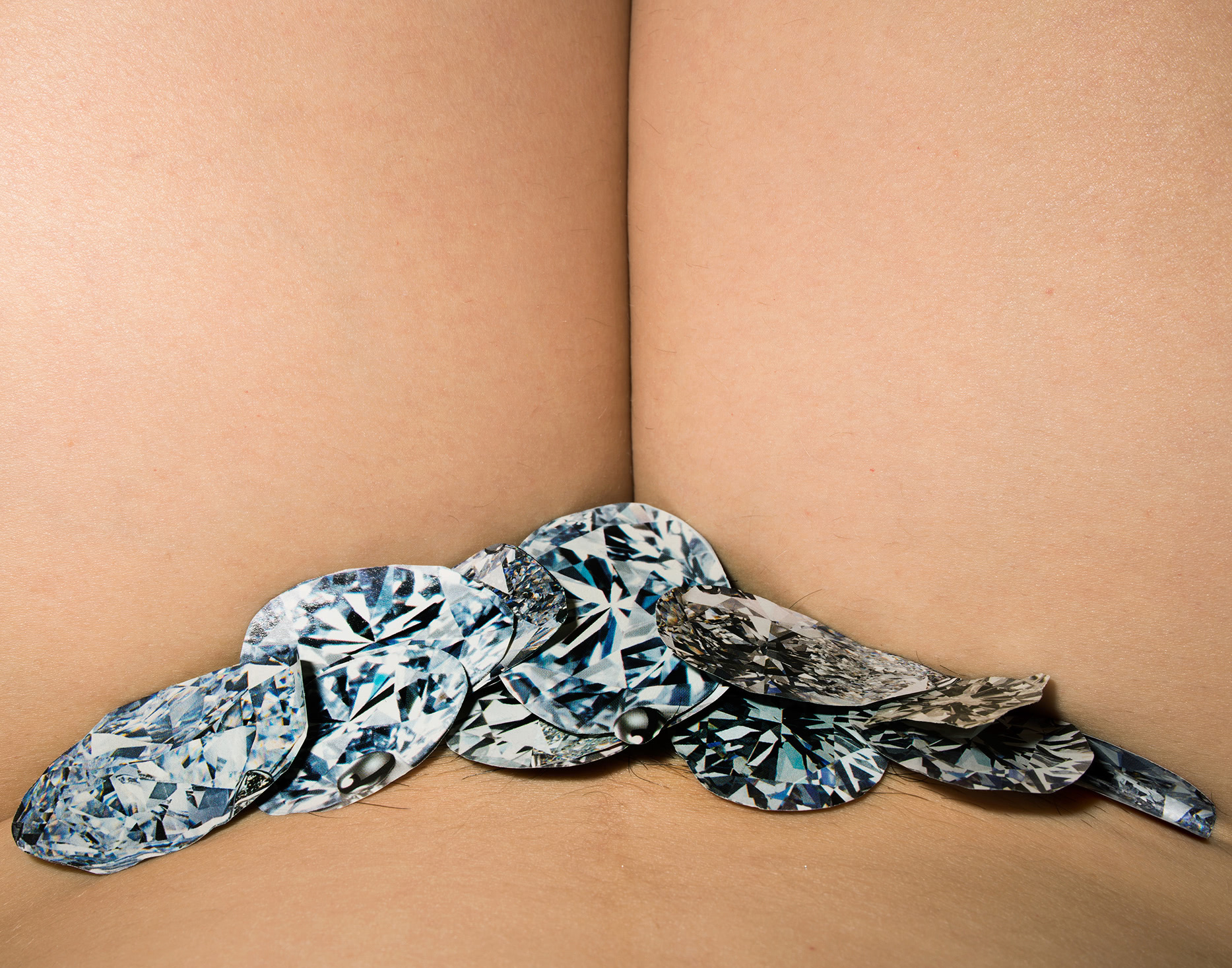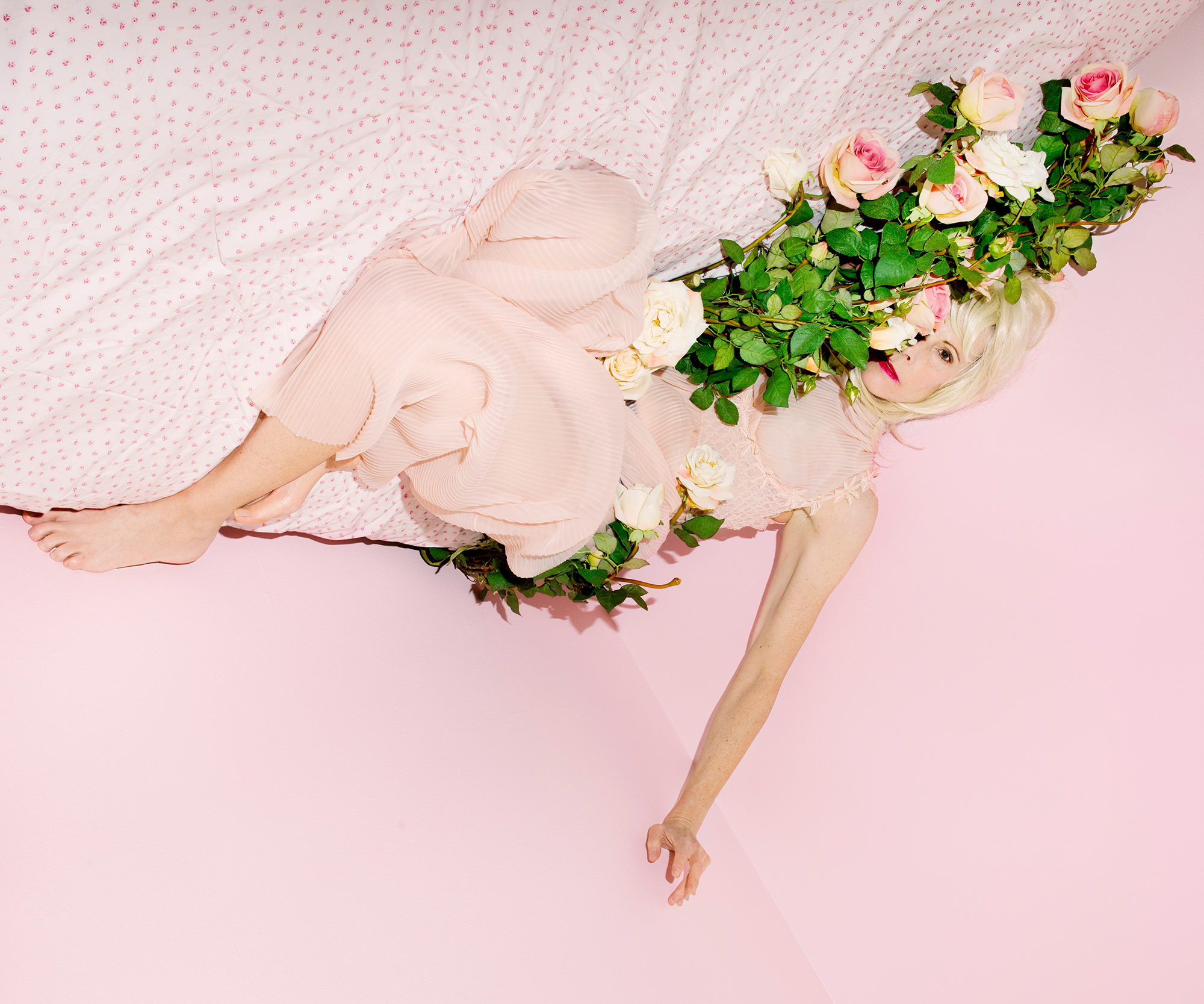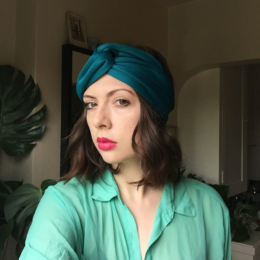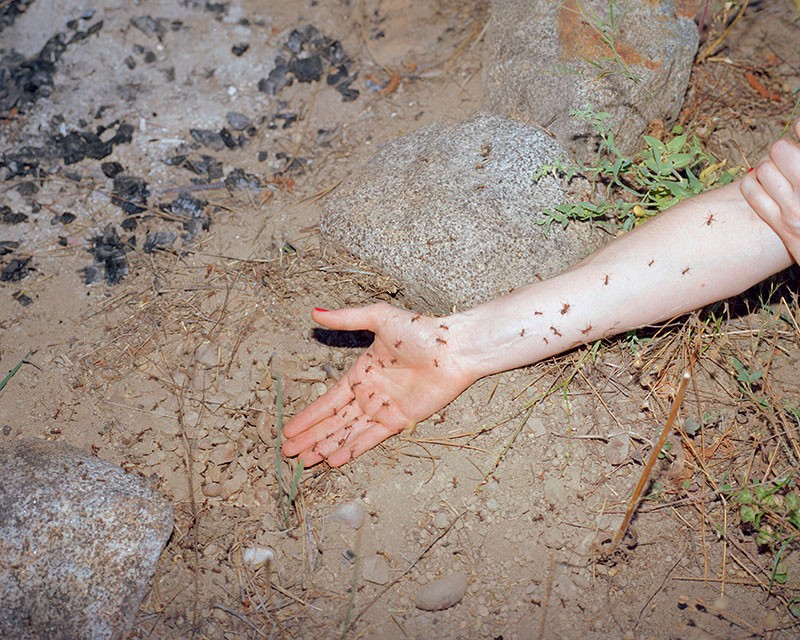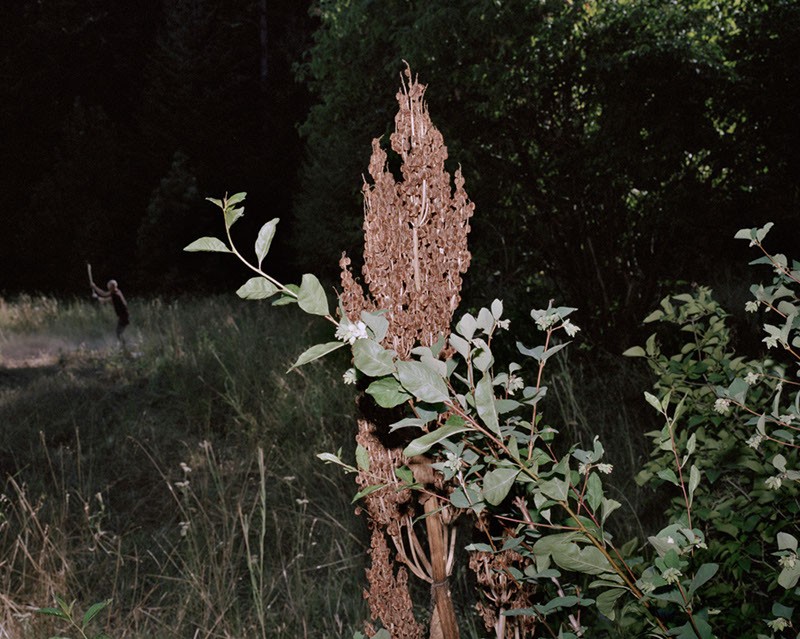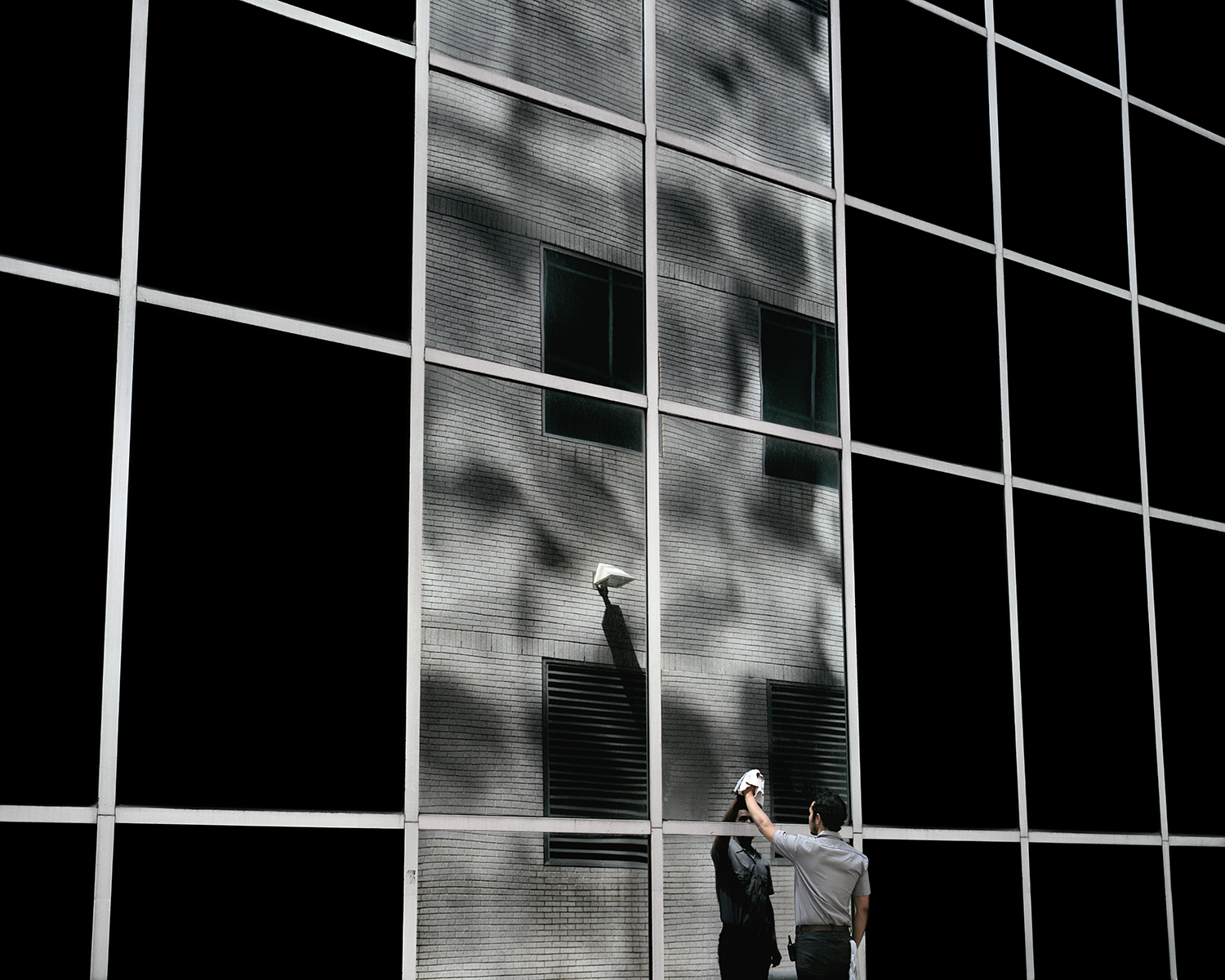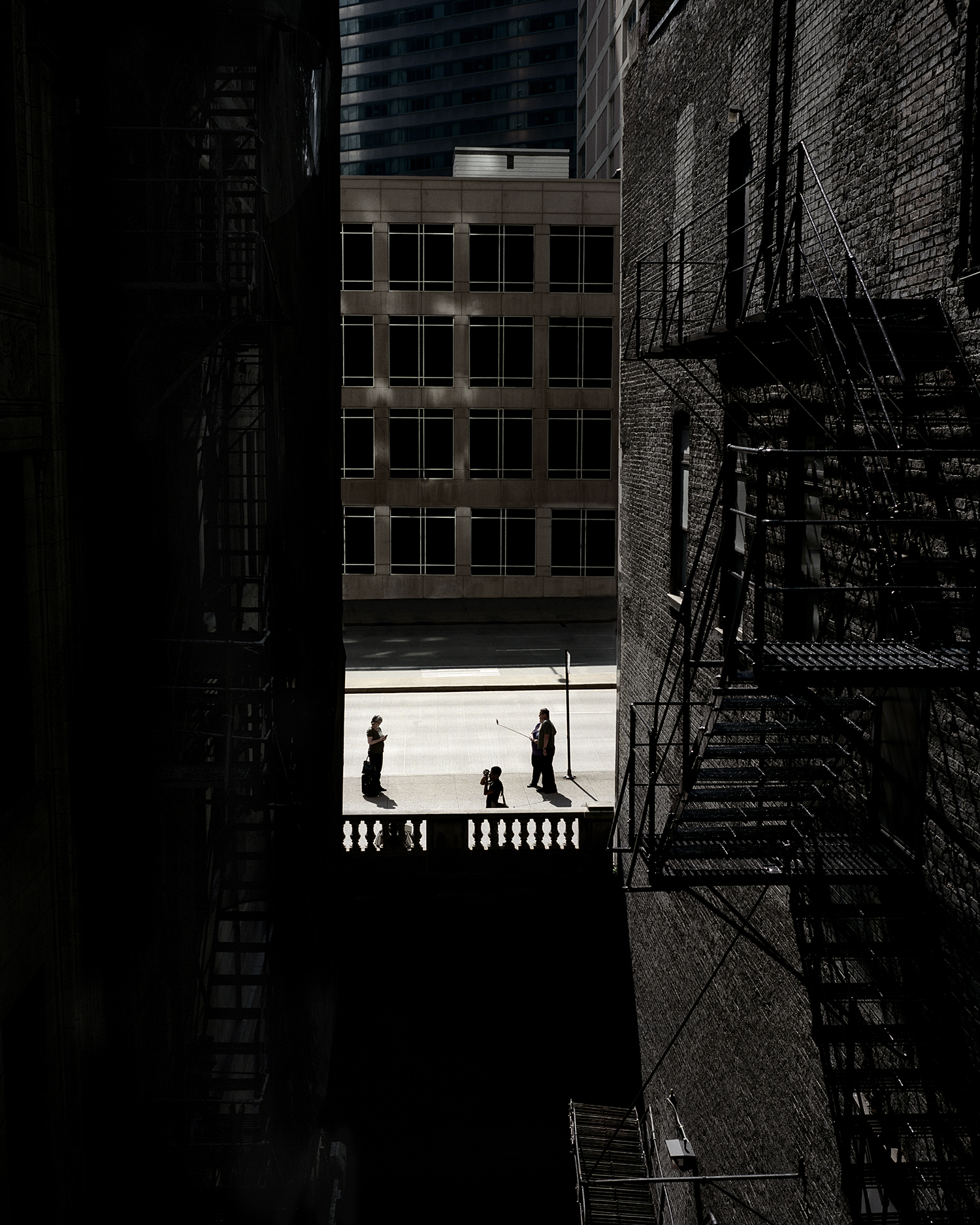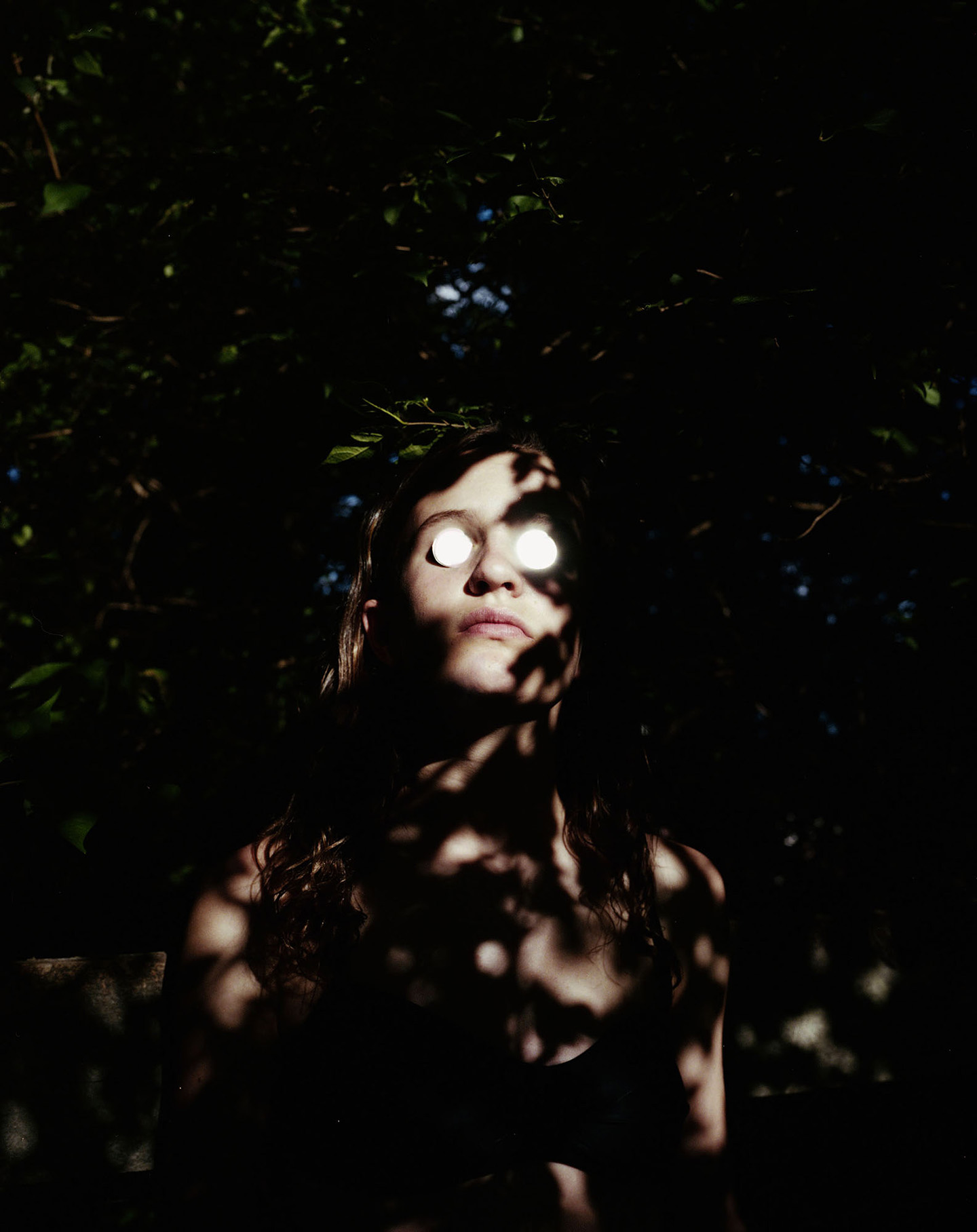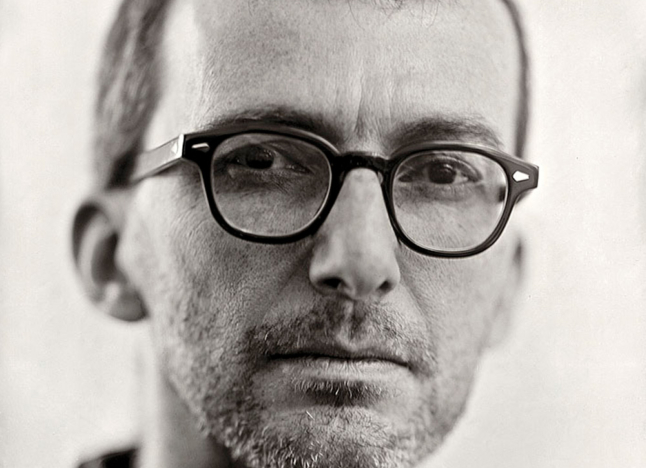James Reeder
Artist Feature
Every week an artist is featured whose single image was published by Der Greif. The Feature shows the image in the original context of the series.
Natalie Krick - Natural Deceptions
May 24, 2017
My mother, my sister and I perform for each other, for the camera and ultimately for you. In the harsh revealing light of the flash; we pose, we masquerade until our unstable identities begin to merge. We impersonate each other and ourselves, emulating imagery that has taught us how to be beautiful. The resulting pictures, portraits and fragmented photographs of our stylized bodies, mimic the alluring glamour and artifice found in magazines while mocking the idea of being easy on the eyes. In the act of embodying these tropes, cultural cliches become personal, pointing to the way photography influences the fantasies and fictions we have created about ourselves.
My photographs are fueled by my conflicting attraction and aversion to images of glamourous women. I am fascinated with perceptions of the sexualized body and the intersection between the ubiquitous and the taboo nature of sexuality. I photograph to portray beauty as artificial, flawed, threatening, psychological, seductive and garish.
Artist Blog
The blog of Der Greif is written entirely by the artists who have been invited to doing an Artist-Feature. Every week, we have a different author.
Published in:
»Guest-Room Jörg Colberg«
Courtney Asztalos
Jun 02, 2017 - Natalie Krick
Courtney Asztalos hangs out in casinos – watching and searching for women to photograph. Her women are older, mysterious and they radiate self possession. Femininity and youth are often bound so tightly together that the self presentation of Asztalos’ women becomes a powerful subversive act. Asztalos gets close with her camera and the the curious hues and bright flash expose every detail. We are allowed to look and while others may scrutinize or judge – I revel.
“Purple Domino, was formed through the physical investigation of casinos and the women who present themselves and orbit within these spaces. Photographed in New York, Nevada, and Florida, the idea of the casino is both mythical and accessible. I was drawn to the autonomy of these women, who, divorced from reality, became magnetic and exerted a great deal of visual force. The people in my photographs are chosen based on the way they perform in public; I am drawn to individuals who seem to channel the energy of the space and use it as a stage to amplify the performance of their imagined selves. Together we create an unacknowledged collaboration. A casino’s purpose is to transmit and imbue desire to and in everyone who enters. My subjects absorb and consume this radiating power of desire and pour it back into their performance of self, a reifying act: the construction of an armor which repels expectations and codes of femininity.” – Courtney Asztalo
View more of Courtney Asztalos’ work on her website.
Jenny Riffle
Jun 01, 2017 - Natalie Krick
Jenny Riffle’s photographs of the Pacific Northwest are both beautiful and frightening. The landscape feels haunted and each scene that plays out before her camera is swollen with tension. Ants swarm up a woman’s arm, the mist crawls across trees in the forest, a man swings an axe. Her images are a visceral telling of the place where she spent her childhood.
“The Sound of Wind is a rediscovery of the Pacific Northwest through my memories of growing up there and my present experiences. I took for granted my surroundings until I left home and lived elsewhere. Every time I came back I would see it with new eyes. It seemed that every place I went contained some memory of childhood forgotten and unappreciated. After moving back to the northwest I started photographing the landscape and the people inhabiting it.
There is a captivating beauty here that inspires people, and there is also a darkness. I am drawn to the places in between dreams and reality, somewhere between memory and the present experience. I walk around and look out into the woods, seeing them anew and seeing them through the veil of memories at the same time. I look up at the moss covered branches and I remember nights spent sleeping outside in the dark looking up to see a thousand hairy spider legs instead of branches and quickly hiding under the covers. I remember ants crawling all over my feet and my father trying to calm me down, telling me that the ants will not bite. Unknown forces of nature can be terrifying, but they can also be profoundly beautiful. It is this balance that draws me to photograph the Pacific Northwest.” -Jenny Riffle
View more of Jenny Riffle’s work on her website.
Clarissa Bonet
May 31, 2017 - Natalie Krick
The click of the shutter has stopped the man in the crosswalk. Disregarding the “Don’t Walk” signal he is forced to pause partially in the street and steps before passing into shadow. The intersection is deserted but he still glances to his right checking for traffic. His eye must struggle in momentary terror when the details in the surrounding shadows vanish. The eye adjusts and therefore succeeds where the photograph fails. Fragments of the city around him are blacked out, recalling the way the city landscape exists in memory. Parts of the city’s surface are observed and remembered while other details are deleted or simply unrecorded.
“The urban space is striking – its tall and mysterious buildings, crowds of anonymous people, the endless sea of concrete. City Space is an ongoing photographic exploration of the urban environment and my perception of it. I am interested in the physical space of the city and its emotional and psychological impact on the body. These photographs reconstruct mundane events in the city that I have personally experienced or witnessed in public. Stark light, deep shadow and muted color are visual strategies I explore to describe the city. I use the city as a stage and transform the physical space into a psychological one. The images I create do not represent a commonality of experience but instead provide a personal interpretation of the urban landscape.” -Clarissa Bonet
View more of Clarissa Bonet’s work on her website.
Julie Jones
May 30, 2017 - Natalie Krick
She floats in darkness, her body entangled in the shadows. The sun pushes its way through the thick forest over head illuminating her face. Light radiates from the two circles either arranged over her eyes or on the surface of the photographic paper. The circles, coins that weigh down the eyes of the deceased in our world and act as payment to cross over to the next. This reference to the bribe of Charon and crossing the river Styx surfaces in a playful childhood fantasy game. Often drawing from the language of vernacular photography Julie Jones weaves memories from her childhood in suburban Ohio with myth, fantasy and elements of horror. Looming dark shadows torment her family members while the tensions that lurk in the broad daylight offer them no relief.
“In the series UMBRA I struggle with this notion of the familiar and banal transforming into a world of fantasy and unease. I work with my family members and personal memories to deconstruct what my home was and reconstruct what it has become: a shadow world where the past and present exist in the same space as the real and imagined.” -Julie Jones
View more of Julie Jone’s work on her website.
Lissa Rivera
May 29, 2017 - Natalie Krick
Like many photographers before her, Lissa Rivera photographs her muse continuously. Rivera’s muse is her lover, her sweetheart, her partner, her collaborator, her BJ. Her lush photographs are ripe with countless desires that transcend her romantic love and lust for him. The collaborators explore their fascination with feminine beauty through a playful and calculated process of creating photographs. In each photograph they inhabit and revel in a fantasy of their own construction which Lissa describes as a vision of queer femininity.
“Together we investigate feminine fantasies presented throughout the history of photography and cinema. The project is a way to ‘step-inside’ images that we have found alluring and examine what it is like to live each scenario out. We explore both our captivation and our ambivalence towards these depictions of femininity. By presenting my partner within the lineage of great beauties and populating the media with our images, we are reclaiming our voice in what is attractive and beautiful.”
-Lissa Rivera
View more of Lissa’s work on her website.
Beautiful Boy opens at Clamp Art in NYC on June 1st.
Sadie Wechsler
May 24, 2017 - Natalie Krick
A woman with her back turned slouches in a patio chair bathed in ultraviolet light. Even though the light is cool it feels like one of those sticky summer nights when midnight offers no relief from the clammy heat. The strap of her white slip falls off her shoulder and her legs are spread – but not for us. The warped shadow of her crown of curlers is the only image in the white projection on the wall to her right. Her chalky white face mask matches the blank screen. Waiting to be projected on to. A cliche relaxation routine, a beauty ritual, an act of self love. A slight smile crosses her lips while she gazes away from the screen at her reflection in the sliding glass door.
A small river the color of listerine trickles between rusty red and orange boulders. The seductive color of this unearthly landscape threatens radioactivity. A jagged crevice that penetrates the rock reveals itself to be a cut in the photographic paper. The bright cyan drips are windex or cellophane or something else that I can’t put my finger on.
Sadie Wechsler’s images disrupt the ritual of consuming with one quick glance, the common mistake of swallowing whole. A first glance her images are familiar: a rocket ship surrounded by smoke, a group of tourists gawking, a television, a landscape, a portrait. With time – the pictures unravel and their familiarity is sliced apart. The TV is a box made from paper and tape, the tourists are watching the earth burn or they might be staring into a backdrop. I can see the seams, the cut paper, the manipulation does not merely reveal the image as fake. My eye is deceived and I must continue to look.
In her own words “Imagination proves to be the most loyal record keeper of the times. I visually approximate the disruptions and shifts of my experiences in the world. If photography is a medium capable of change, acclimation and physicality, it will speak natively to a life in flux.” See more of Sadie’s work on her website.


